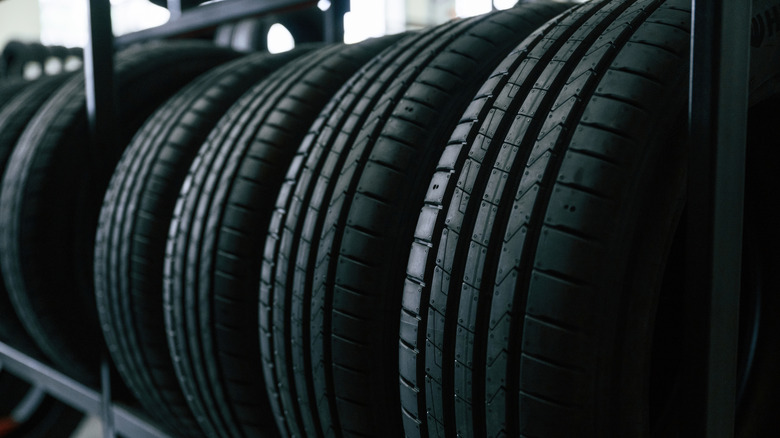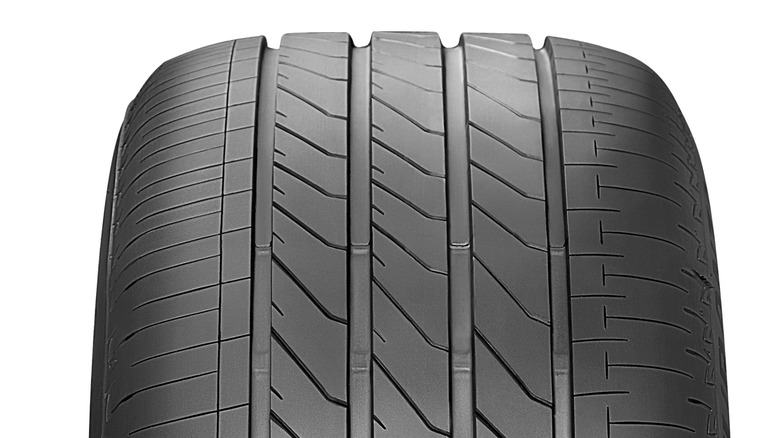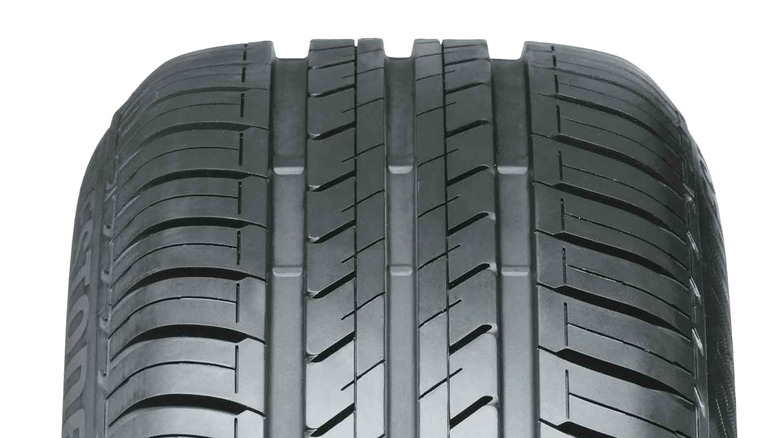Asymmetrical Vs. Symmetrical Tires: What's The Difference?
Car tires have various tread patterns depending on the type of tire and the intended application. The tread is the one that touches the road and is responsible for how the tires behave in terms of comfort, rolling resistance, road silence, traction, stopping ability, and handling. Tires can come with an asymmetrical, symmetrical, or directional tread pattern. Knowing the difference between each type will help immensely in choosing which tire brand is best for your car or, in this case, which tire would cope best with your everyday duties.
The tire tread has four parts: Ribs, grooves, tread blocks, and sipes. The ribs and tread blocks are the raised sections that contact the pavement. Grooves are the channels that run around or across the tire, while the sipes are smaller and shallower grooves along the tread blocks. The tire maker arranges and designs the ribs, grooves, sipes, and tread blocks to create a directional, asymmetrical, or symmetrical tread pattern.
Directional tires are the easiest to distinguish, with a tread design intended to roll forward in a single direction. They typically have V-shaped grooves like the tip of an arrow, and the design enables them to displace more water more effectively, provide excellent high-speed grip, and deliver steady traction over muddy or snowy pavement. Most winter or all-season tires have directional tread designs, but asymmetrical and symmetrical tires are different and easily interchangeable.
Asymmetrical tires are for performance applications
Tires with asymmetrical tread patterns have two different tread designs on the inner and outer shoulders. The inner part has more lateral grooves for water displacement, while the outer features larger tread blocks to deliver sportier handling and a sharper steering feel. Most high-performance tires from legacy tire makers like Bridgestone and Michelin have asymmetrical tread designs. However, finding this tread pattern on some all-season rubber from budget tire brands is not unusual.
Since asymmetric tread designs are typically for performance vehicles or sports cars, these tires are known for their sticky handling in the dry and excellent grip on wet roads. The only downside is tire rotation. Directional and asymmetrical tires can only roll in a single direction and require lateral rotation, meaning the left front can only go to the left rear and the right front to the right rear.
It's why asymmetrical (and directional) tires have labels on the sidewall to indicate the "Outside" and "Inside," referring to which sidewall should be facing you when mounted to the wheel.
Symmetrical tires are for passenger cars
In contrast to asymmetric, symmetrical tires feature the same tread pattern on both halves. They typically have independent tread blocks and continuous grooves, enabling symmetrical tires to excel in fuel economy, a quiet ride, and longer wear. Moreover, these tires are the easiest to rotate and have no specific requirements for the mounting direction. They suit the car's left, right, front, or rear since symmetrical tires can spin in either direction.
It all sounds groovy, but symmetrical tires have a slight disadvantage in changing weather conditions or wet roads. Making up for it is the cost since symmetrical tires generally cost less than performance tires with directional or asymmetric tread patterns.
No matter what tire brand or whether your car has symmetric or asymmetric tires, it's critical to keep up with periodic tire maintenance and to avoid things that are speeding up wear and tear. New tires are getting costlier by the day, and you'll be doing a massive favor to the environment by making the most out of the four tires in your car. Lastly, avoid mixing tires with different sizes and tread patterns to retain your ride's comfort and handling characteristics.


